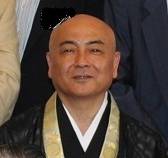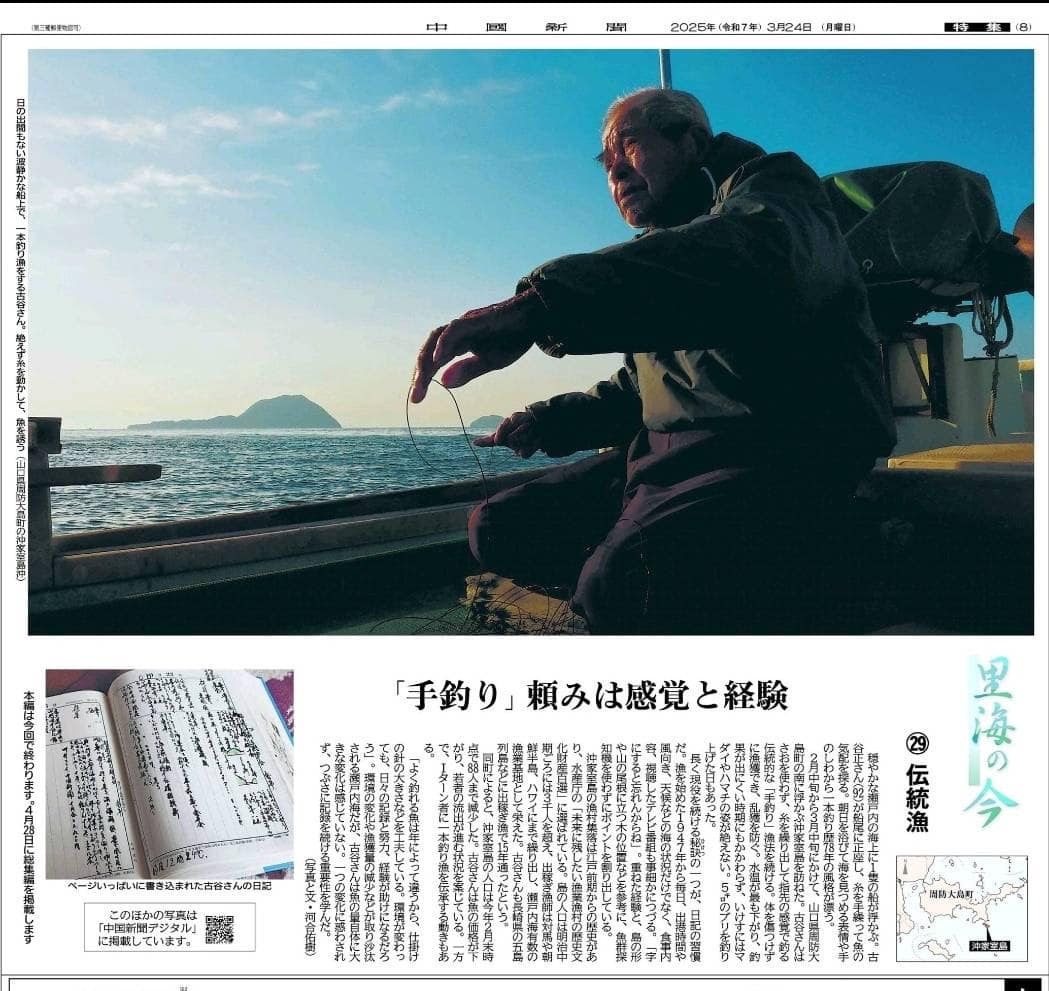


"Satoumi Now - Traditional Fishing" (Chugoku Shimbun) This is an article about Tadashi Furutani (92 years old) in Okikamuro. He can be called a living national treasure of fishermen. He is still active and goes out fishing every day.

|
Contents of the article in the Chugoku Shimbun on March 24, 2025
Satoumi Now (29 Traditional Fishing)
Hand fishing relies on intuition and experience
A boat floats on the calm waters of the Seto Inland Sea. Tadashi Furutani (92) sits upright at the stern of the boat, reeling in the line to search for signs of fish. His expression as he gazes out at the sea in the morning sun and the wrinkles in his hands exude the air of someone with 78 years of experience in line fishing.
From mid-February to mid-March, I visited Okikamuro Island, which lies to the south of Suo-Oshima Town, Yamaguchi Prefecture. Mr. Furutani continues to use the traditional "hand fishing" method, which involves letting out the line and fishing with the sense of touch of the fingertips, without using a pole. This allows the fish to be caught without injuring the body, and prevents overfishing. Even though the water temperature is at its lowest and it is the most difficult time to catch fish, red sea bream and yellowtail are constantly appearing in the fish ponds. On one day, he even caught a 5kg yellowtail.
One of the secrets to his longevity is his habit of keeping a diary. Since he started fishing in 1947, he has been writing down in detail not only the departure time, wind direction, weather and other sea conditions, but also what he ate and what TV programs he watched. "If you write it down, you won't forget." He uses his accumulated experience and the shape of the island and the position of the trees on the mountain ridge to determine the best spots without using a fish finder.
The fishing village of Okikamuro Island has a history dating back to the early Edo period, and was selected by the Fisheries Agency as one of the "100 Historical and Cultural Assets of Fishing Villages to be Preserved for the Future." The population of the island exceeded 3,000 in the mid-Meiji period, and the island flourished as one of the leading fishing bases in the Seto Inland Sea, with migrant fishermen heading out to Tsushima, the Korean Peninsula, and even Hawaii. Furutani himself spent 15 years commuting to the Goto Islands in Nagasaki Prefecture to work as a fisherman.
According to the town, the population of Okikamuro Island had fallen to 88 people at the end of February this year. Furutani is concerned about the declining price of fish and the increasing outflow of young people. On the other hand, there is a movement to pass on the tradition of hand fishing to people who have moved away from the area.
"The fish that are easy to catch vary from year to year, so I try to adjust the size of the hooks I use. Even if the environment changes, my daily records, efforts, and experience will help me." Although the Seto Inland Sea is often talked about for its changing environment and declining catches, Furutani has not noticed any major changes in the amount of fish. He learned the importance of continuing to record in detail without being distracted by one change.
(Photo and text by Yuki Kawai)